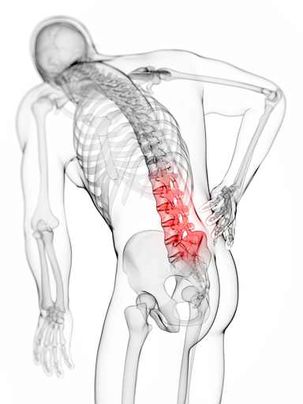
Schmerzbehandlung der Wirbelsäule
Acute or chronic back pain is a common complaint.
Besides muscle tension and muscle injuries, the cause is frequently degenerative changes in the vertebral facet joints or vertebral discs.
If drug or physical treatment does not result in sufficient therapy success, targeted infiltration is a good option as pain therapy.
Two procedures
- Infiltration of the nerve roots of the spinal column (PRT – periradicular therapy)
- Infiltration of the joints of the spinal column (FB – facet joint block )
Required preliminary examinations/preliminary findings
- Referral by a specialist (usually a specialist for neurology, neurosurgery, orthopedics, or physical medicine), specifying the “target region” (for example, nerve root L4 left)
- Recent MRT or CT-examination of the relevant region of the body
- Blood work/coagulation ( PTT, thrombocytes)
Treatment sequence
Based on a CT planning examination, the puncture site is precisely localized.
You will lie prone on the CT examination table, and you and the table will move slowly through the device opening (gantry). Please try to lie as still as possible and breathe regularly/calmly.
After localization of the puncture site and skin disinfection, the puncture is made using a very thin needle system under CT image-intensification control, in order to ensure precise localization of the focus of the ailment.
Then a mixture comprising an anesthetic (local anesthetic), an anti-inflammatory drug (cortisone preparation), and a contrast agent is injected with pinpoint precision.
Depending on how the complaint develops, and the way you respond to the therapy, repeated infiltrations might be administered.
We request that you arrive approximately 20 minutes before treatment is to begin.
A physician will once again discuss the treatment process with you, on the basis of an information sheet and declaration of consent.
Possible complications
In rare cases, there can be numbness or paralysis in the leg. These complaints disappear spontaneously within 8 hours at the most.
Other complications, such as hypersensitivity reactions to the medications administered, bruises, infections with abscess formation, or cardiovascular reaction are extremely rare.
Follow-up
After successful treatment, you will remain at the Institute for approximately one hour for follow-up.
After pain-relief treatment, an adult companion should call for you at the center. For safety reasons, you should in any case avoid driving a car or two-wheel vehicle unaccompanied.
